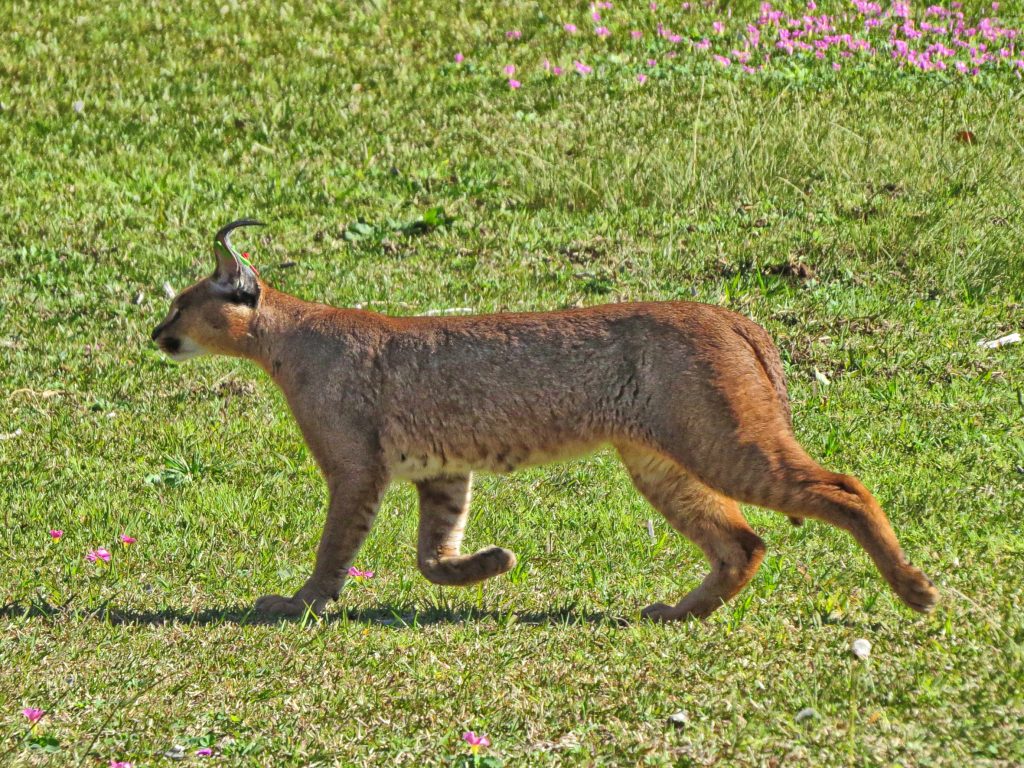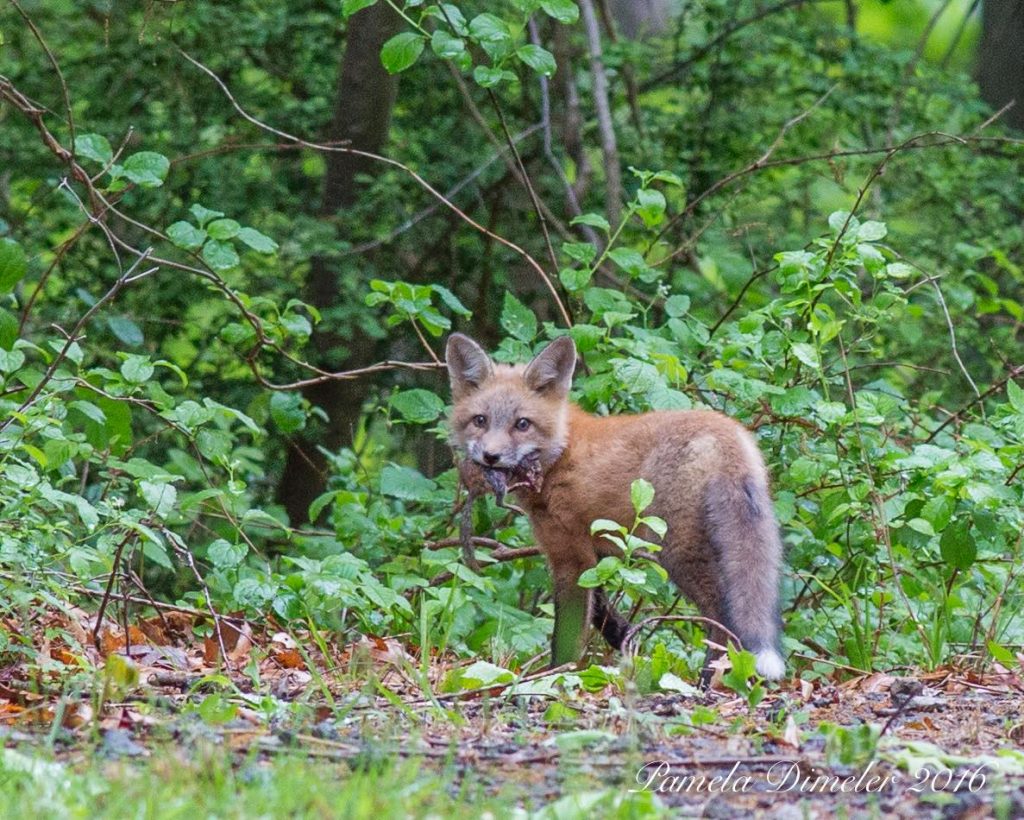By Joe Eaton
(March 2019)
The environmental pathway of second-generation anticoagulant rodenticides (SGARs) seemed simple and straightforward: rats, ground squirrels, and other rodents eat poisoned bait and are eaten by raptors (hawks, owls) and carnivorous mammals (bobcats, mountain lions, foxes.) Recent studies from South Africa, France, and Germany complicate that picture, presenting evidence that fish and other aquatic organisms may be SGAR vectors and that terrestrial invertebrates, notably the lowly slug, may consume SGARs and pass on the poison to their mammalian and avian predators.

The South African research, published in Science of the Total Environment, focused on the caracal, a lanky mid-sized cat whose tufted ears and abbreviated tail give it a superficial resemblance to the Northern Hemisphere lynxes, although it’s not a close relative. A team led by Laurel Serieys, who had previously studied the relationship between SGAR exposure and notoedric mange in Southern California bobcats, took blood samples from caracals trapped in the Cape Town area and liver samples from roadkill victims. Their data showed an initially puzzling association between SGAR exposure and proximity to vineyards. Although the scientists didn’t find rodent bait in the vineyards, they discovered bait stations around wineries and ancillary tourist services, where rats running across the tasting room floor were considered bad for business. SGARs were also found in the liver tissue of road-killed individuals of four other mesopredator mammal species (Cape clawless otter, large-spotted genet, water mongoose, and honey badger) and one raptor (Cape eagle owl, a counterpart of the North American great horned owl.)
How were these animals exposed?
Caracals prey mainly on rodents, hyraxes, and birds; those that also eat smaller carnivores risk tertiary poisoning. Eagle owls eat rodents and other small mammals; honey badgers, notoriously, will eat anything. The genet—a small catlike carnivore—and otter were the interesting outliers. Genets have been known to eat cockroaches and other invertebrates. Cape clawless otters, like their northern relatives, take some fish, but primarily crabs, crayfish, and other aquatic invertebrates. ARs were detected in half the otter samples. “We suspect that otters may also be secondarily exposed via invertebrate prey, or alternatively, directly exposed via contaminated water,” Serieys and her colleagues wrote, adding that SGARs “can collect in freshwater systems through storm water run-off and sewage spills.” Invertebrate vectors were also suspected in the case of the genets. Since the water mongoose takes both aquatic prey and terrestrial rodents and the Cape eagle owl sometimes eats crabs and frogs, aquatic pathways for those species can’t be ruled out.
This was not the first time SGARs had been found in otters. In 2004, Christine Fournier-Chambrillon and her associates reported bromadiolone residue in the liver tissue of three mustelids (weasel relatives)–Eurasian otters, western polecats, and endangered European minks–in southwestern France. The authors implicated poisoning campaigns against invasive North American muskrats and South American nutrias (also known as coypus), with poisoned rodents eaten or scavenged by the mustelids. A later study found bromadiolone in otters from the Loire River watershed but didn’t discuss possible sources.
North American otter data is sparse. According to Stella McMillin of the California Department of Fish and Wildlife, trace amounts of SGARs were present in the livers of two road-killed river otters from Alameda County, California, where the once-rare species has rebounded in recent years.
Meanwhile, German researchers had been looking for SGARs in the livers of bream, a common European freshwater fish, and in suspended particulate matter collected from 18 sites (16 rivers and two lakes) across the nation. In Environmental Science and Pollution Research, lead author Matthias Kotthoff and his team reported brodiafacoum, bromadiolone, difenacoum, and other SGARs in the bream samples, and bromadiolone in the particulate matter samples. Brodifacoum was found in 88 percent of the fish samples collected in 2015 and showed an increase between 2011 and 2015 at one station on the Saar River. In Germany, SGARs are primarily used to kill rats in sewers, presumably entering waterways via discharges from wastewater treatment plants or stormwater runoff. (In contrast to the French studies, the German scientists didn’t find SGARs in the livers of a small sample of road-killed otters from the Elbe River watershed.)
In addition to the South African otter case, a French study pointed to the potential importance of invertebrate vectors. Also published in Science of the Total Environment, a report by Hussein Alomar and other researchers describes field tests near Lyon in which slugs were found to eat rat bait containing brodifacoum, bromadiolone, and chlorophacinone, accumulating quantities calculated to be lethal to European hedgehogs, common shrews, and European starlings. (The starling, an introduced species in North America, is of course a native bird in France.)

There are obvious food web and tertiary exposure implications. Shrews are an important prey item for many predatory mammals and birds. Known predators of hedgehogs, undeterred by their spines, include red foxes, European badgers, pine martens, Eurasian eagle owls, and golden eagles. SGAR residues had previously been found in British hedgehogs, but the source was not established. Starlings are common prey for hawks, falcons, and owls. Together, these new studies suggest an ominous pervasiveness of ARs in both terrestrial and aquatic ecosystems.
